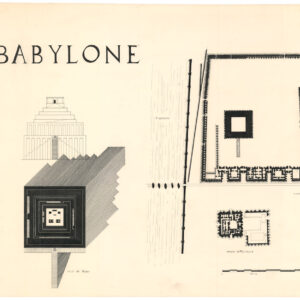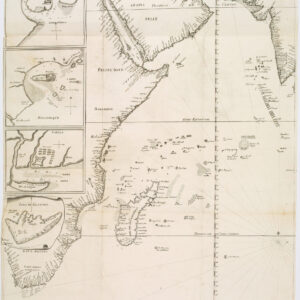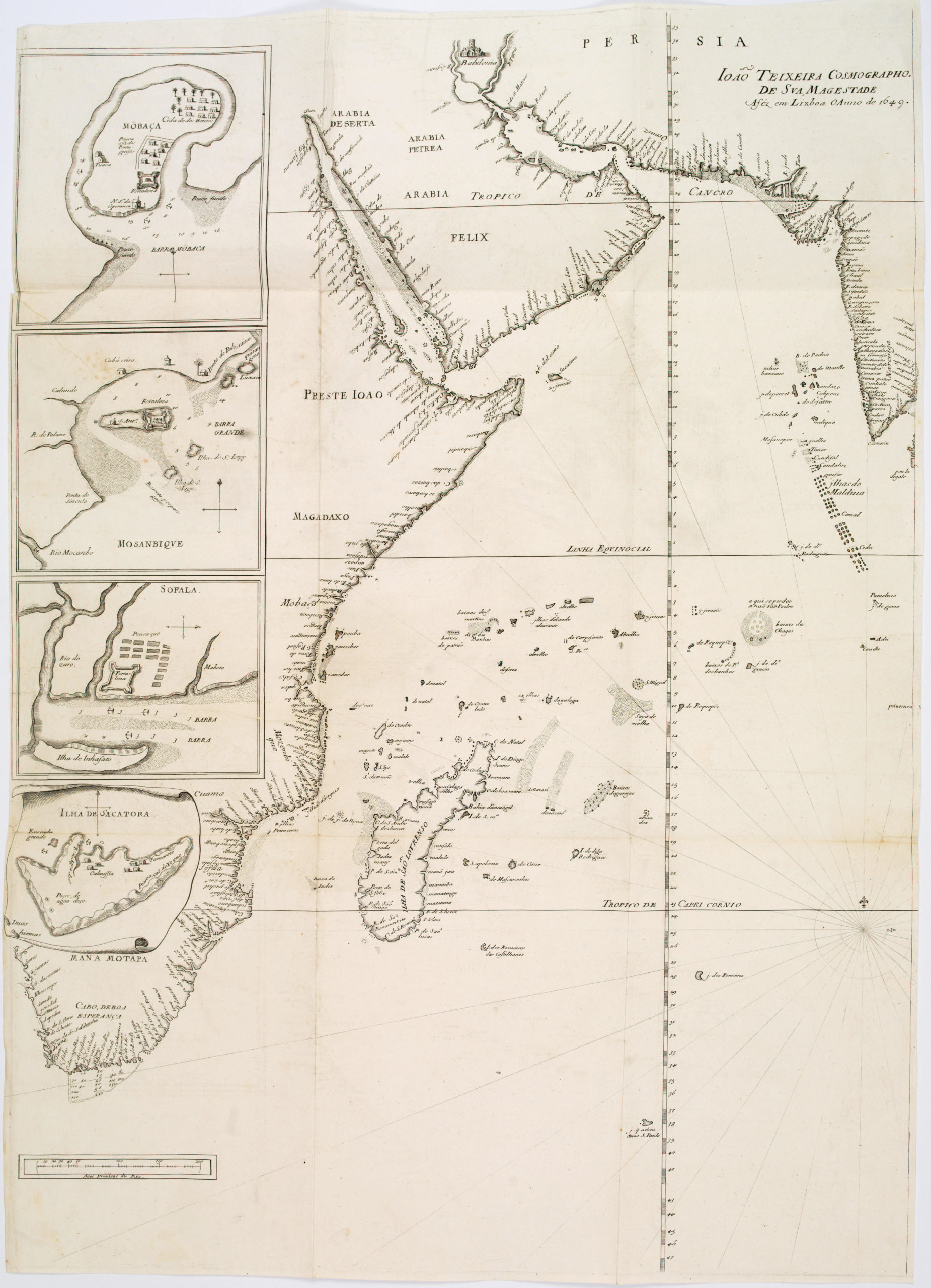1580 Braun & Hogenberg bird’s-eye-view of Algiers in original colors.
Algerii Sarace norum urbis fortissimae…
Out of stock
Description
An attractive view of Algiers, including a numbered key legend.
This plate of Algiers depicts the formidably fortified town in a low bird’s-eye view, with a figure bottom left dressed in a turban and kaftan, the coloring of which matches that of the surrounding countryside. The fortress-like layout of the town conveniently located on a harbor features a well-laid out Old Town with five mosques, including, in the foreground, the Great Mosque (Q) from the 11th century. While Algiers belonged to the Kingdom of Aragon after the Reconquista in 1492, in the early 16th century many Moors, Moriscos and Corsairs made Algiers and Tunis their base. Among others Ferdinand, the Catholic, campaigned against their piracy; on the other side the Turks helped the North Africans and, with the exception of Morocco, the land became part of the Ottoman Empire in 1518-1519. Algiers is today the capital of Algeria, in which approximately 2.2 milion people live. (Taschen)
The Civitates Orbis Terrarum (Atlas of Cities of the World) by Hogenberg was the second oldest printed atlas in the history of the world cartography, and the first atlas of towns. Its principal creators and authors were the theologist and editor Georg Braun, the most important engraver and publisher Franz Hogenberg, the engraver Simon van den Neuvel, the artist and draftsman Georg (Joris) Hoefnagel, the topographer Jacob van Deventer and others. Although published outside the Netherlands, the Civitates is, nevertheless, one of the best examples of the work of the Antwerp school of cartographers. Some of the key figures in the school were Abraham Ortelius, Gerardus Mercator, and a number of other geographers. The Civitates reflects the Flemish style of engraving which was typical of Dutch atlases of the period. In addition, the correspondence between Braun, Hogenberg, and Ortelius contains clear indications that the idea to create the atlas was formulated by them in Antwerp.
Translation of cartouche text: View of Algiers, the most powerful town of the Saracens, built in the Numidian province of Africa. Situated on the edge of the Balearic Current in the Mediterranean Sea, across from Spain. Under Ottoman rule.
French text on verso.
Cartographer(s):
Georg Braun (1541–1622) was a German geographer, publisher, and the canon of the Cologne chapter of St. Maria ad Gradus. From 1572, he edited the Civitates orbis terrarum, which contains 546 prospects, bird’s-eye views, and maps of cities from all around the world. As the principal editor, Braun acquired the tables, hired the various artists and contributors, and wrote the texts. He oversaw the project from its inception until its completion in 1617.
The main engraver for volumes I-IV of the Civitates orbis terrarum was Frans Hogenberg (1535–1590), a Flemish painter, engraver, and mapmaker, born in Mechelen and later established in Cologne. Hogenberg was a Protestant exile from the Spanish Netherlands who had worked with Abraham Ortelius on his iconic Theatrum Orbis Terrarum. His detailed depictions of architecture, figures, and heraldry helped define the genre of the Renaissance bird’s-eye view. By the time of his death in 1590, Hogenberg had secured his reputation as one of the era’s foremost cartographic artists.
Condition Description
Paper slightly age toned.
References
Taschen, Braun and Hogenberg, p. 199.




![[With Extensive Contemporary Annotations] Ordnance Survey of the Peninsula of Sinai Made in 1868-9.](https://neatlinemaps.com/wp-content/uploads/2020/05/NL-00842_Thumbnail-300x300.jpg)
![[With Extensive Contemporary Annotations] Ordnance Survey of the Peninsula of Sinai Made in 1868-9.](https://neatlinemaps.com/wp-content/uploads/2020/05/NL-00842-scaled.jpg)
![[With Extensive Contemporary Annotations] Ordnance Survey of the Peninsula of Sinai Made in 1868-9.](https://neatlinemaps.com/wp-content/uploads/2020/05/NL-00842-scaled-300x300.jpg)